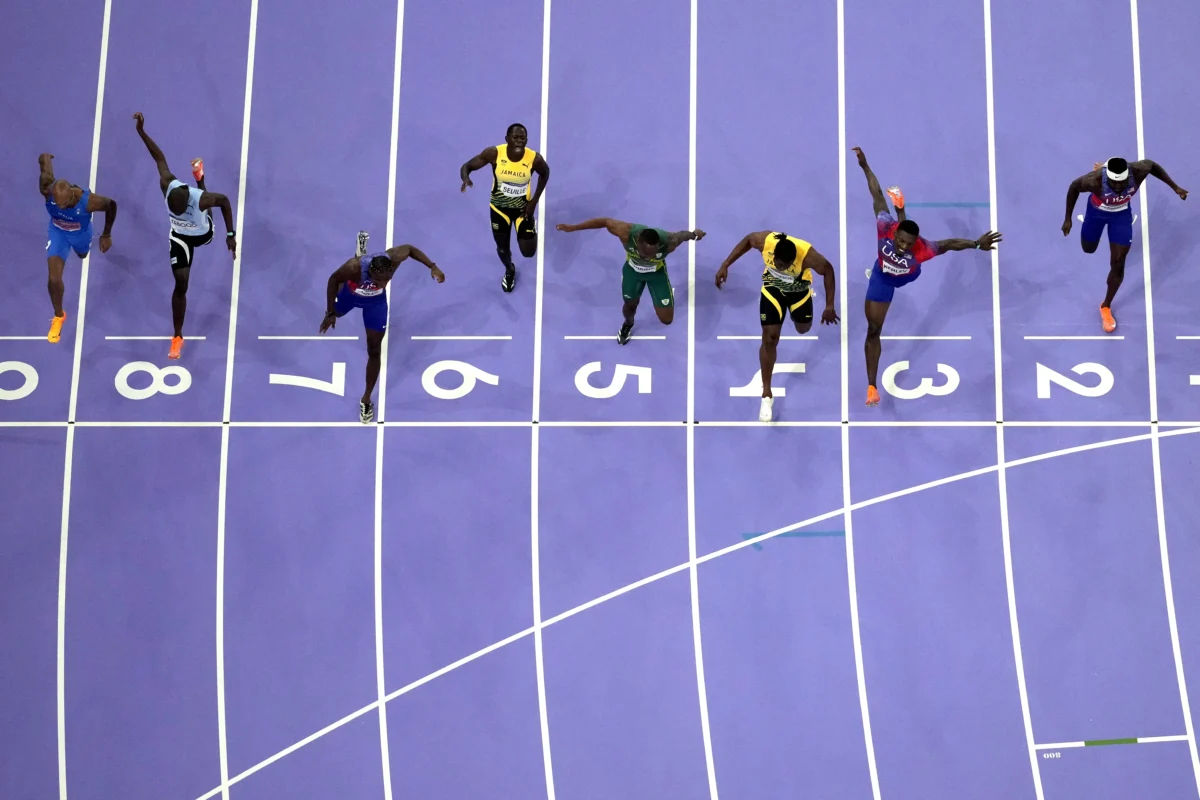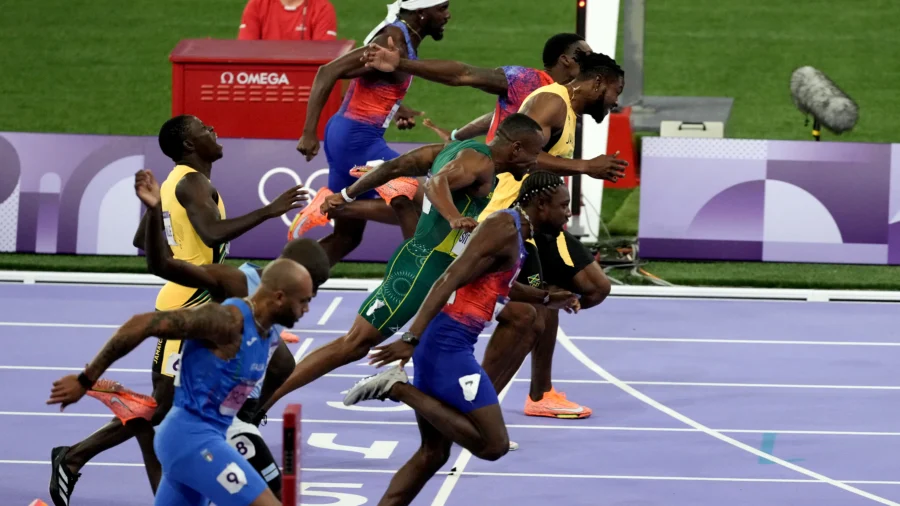In the closest finish ever seen in the 100 meter dash at the Paris Olympics, U.S. sprint star Noah Lyles took the gold medal by a minuscule five-thousandths of a second from Jamaica’s Kishane Thompson—an indiscernible difference were it not for some brand new technology.
In addition to highly accurate electronic photocells, a camera shooting no less than 40,000 frames per second aimed directly at the finish line provides hi-definition images that can render any dispute over who won obsolete—and Sunday’s 100 meter dash was the ideal occasion to put the new equipment to the test.
At 40,000 frames per second, the Omega “Scan’O’Vision’ camera shoots four times as many frames as its predecessor, and records at higher resolutions, making it easier for the Olympic judges to determine the winners.
Swiss luxury watchmaker OMEGA has been the Olympics’ official timekeeper since 1932, when it was selected as the exclusive provider of chronometer chronographs for judges to manually record sporting events.
Since then, the company has been handling both the Olympic summer and winter editions, as well as the Paralympics.
This summer, the company is using its state-of-the-art equipment to measure performances in all 329 Olympic events across 32 sports, in exceedingly more detail than ever before.
“Here in Paris, we obviously have a lot of innovations,” said Alain Zobrist, CEO of OMEGA Timing.
As expected, the innovation isn’t limited to cutting-edge sensors and cameras. The company’s Computer Vision system now uses AI to track and measure each athlete’s performance, and trace objects used in the events.
“We’re very excited about these technologies because they allow us to really tell the full story of an athlete’s performance and explain their results in much greater detail, understanding where they gained or lost time or points.”

The new system no longer requires athletes to wear sensors inside their uniforms, as an array of high-definition cameras installed around the field of play feeds images into AI models that are specifically trained for each sport. These models then analyze the footage to deduct game metrics such as ball speed, jump height, and others in real time.
“This is fascinating as we can also distribute and share that information with wider audiences, working closely with Olympic Broadcasting Services to show these technologies on screen through dedicated graphics,” Zobrist said.
The Computer Vision system is used in a variety of disciplines, including beach volleyball, tennis, swimming, and pole vault.
The AI system can even deduct the movement of an athlete’s skeleton from video, allowing for even the angles of an athlete’s feet to be detected and analyzed during tennis games, for instance.
According to reporting from Axios, OMEGA’s Olympic systems were not impacted by the recent Crowdstrike glitch that shut down computer systems and downstream infrastructure worldwide.

